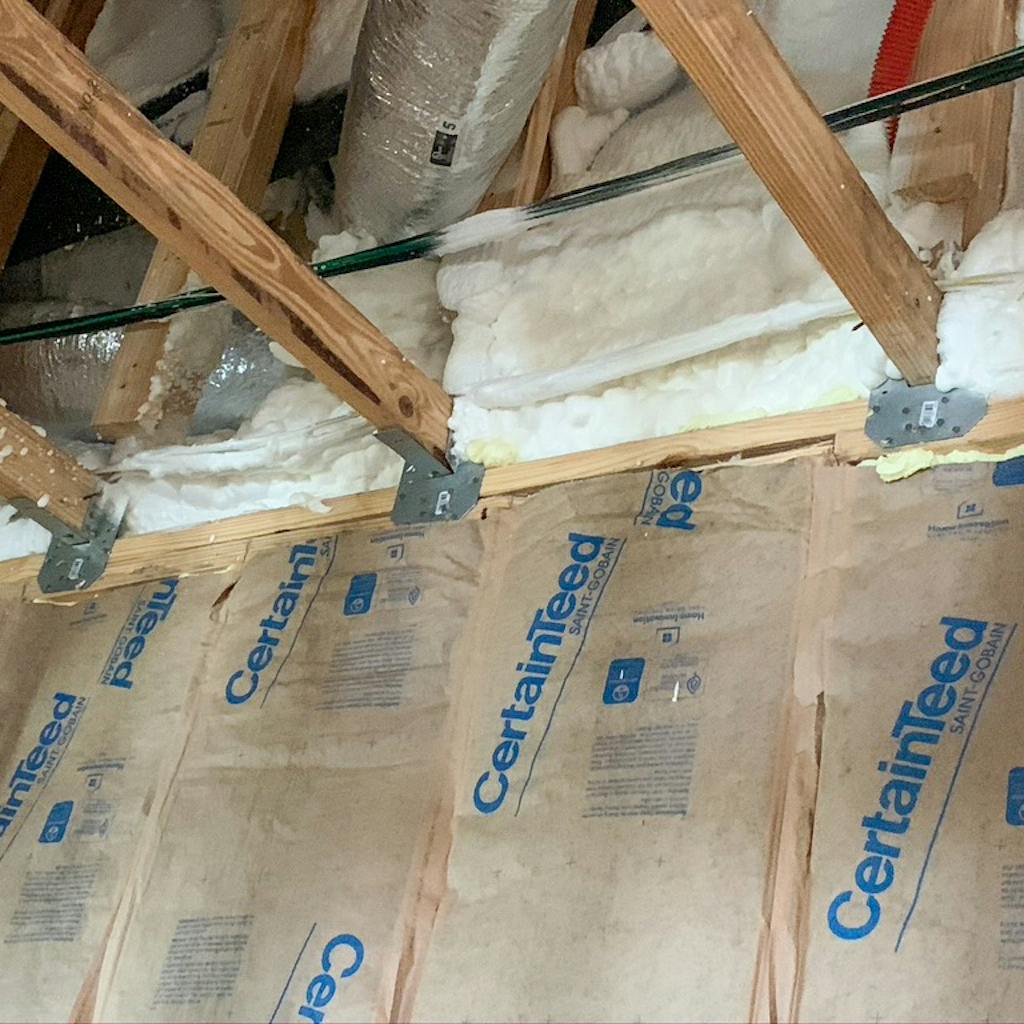Spray Foam Batt Insulation CMU Cell Fill – Clearwater
Jul 15, 2021
4 min read
Wondering what makes homes from Parasol Properties comfortable and long-lasting?

Let me explain a little bit of what goes on behind the walls of our new construction projects. Sandwiched between what you see on the face of a wall sits the insulation of the home. Insulation is material designed to prevent heat or sound from being transmitted from one area to another. Insulation can work in several different ways, but it most commonly incorporates materials consisting of millions of tiny air pockets. In our case, we use both fiberglass batts for most walls space and spray foam for the attic and around penetrations.
Attic Insulation
Open Cell Spray Foam
Open-cell spray foam can be used in an unvented attic to provide the needed thermal resistance and airtightness for a home. The insulation is the typical choice since it is vapor permeable and will allow drying of the exterior sheathing and roof framing. If they happen to get wet, it dries via diffusion into the interior of the building. You’ll be able to spot leaks in the roof if something is wrong. Other benefits include reducing energy costs, increasing a home’s structural integrity, and prolong the life of an air conditioning unit.
Wall Insulation
Fiberglass Batt
We used Certainteed R13 Sustainable Insulation Kraft Faced Batt + Caulk and Seal for our 2×4 walls. This is a fiberglass product that is made from common sand and recycled glass. The mixture is heated to form molten glass, spun into tiny fibers that eventually form a fiberglass blanket, and formed into batts to fit into certain-sized walls. Aside from being from recycled materials, fiberglass is preferred because it is non-combustible and non-absorbent. Thus, fiberglass will not support a flame (although the facing on fiberglass is often combustible), nor will it compress if it gets wet.
Around Penetrations
Windows and Penetrations
We also require our insulator to seal penetrations with foam to provide draft stopping measures. It’s not the same open-celled product mentioned above. Instead, these foams are sprayed from a can and are typically are made from Polyurethane. Spray foam around the windows was done during the wood framing stage when installing the windows and doors.
We require white foam for doors and windows. The white foam forms a long-lasting, weather-tight seal to reduce drafts for greater comfort and lower energy bills. It can adhere to wood, drywall, metal, masonry, glass, and most plastics while having an elasticity that allows movement and shifting within a structure.
For all other penetrations, we have specifics to use orange foam. The orange foam is a fire-resistant foam spray used to seal building floor, wall, or ceiling penetrations. Unlike the flexible white foam, the orange stuff, when cured, is quite hard and dense.
Block Insulation
Cell Fill
You might look at our penetrations in the above photos and think, “the insulator ran out of the orange stuff; they tried to substitute it with the white stuff.”. Not in this particular case; we had the orange foam sprayed to fire seal the penetrations. Then, we performed a cell fill of the concrete blocks with CMU Foam. What you see is the runoff and escape of the foam before solidifying.
The foamed-in-place insulation system can fill the cells much more efficiently and completely in an unreinforced, single block wall than the alternatives can. Foam insulation can’t settle and won’t run out of a hole is cut in the wall, other than during installation, which happened to us, and it does not interfere with mason productivity.
The great advantage of a foamed-in-place system is that it creates a complete insulating fill of the gaps in a wall, a huge improvement in the thermal and sound performance over a hollow wall, and even a slight advantage over granular insulating fills.
Another advantage claimed by some manufacturers is an improvement in the fire-resistance rating of a foam-filled block wall.
Home Builders – Knowing what you can’t see.
Our duty as the home builder is to know about the entire home, especially the parts that you never see. Even in a single home, you’ll see 3-4 different types of products used for different applications in a house yet are all considered a single aspect – such as insulation. That’s why it’s important to choose your custom home builder/general contractor/renovator wisely.
Do you have problems with your from Tampa, Lutz, Dunedin, and Clearwater? Would you like them to be inspected? We're here to help!
This article was last updated on Dec 12, 2025
Share